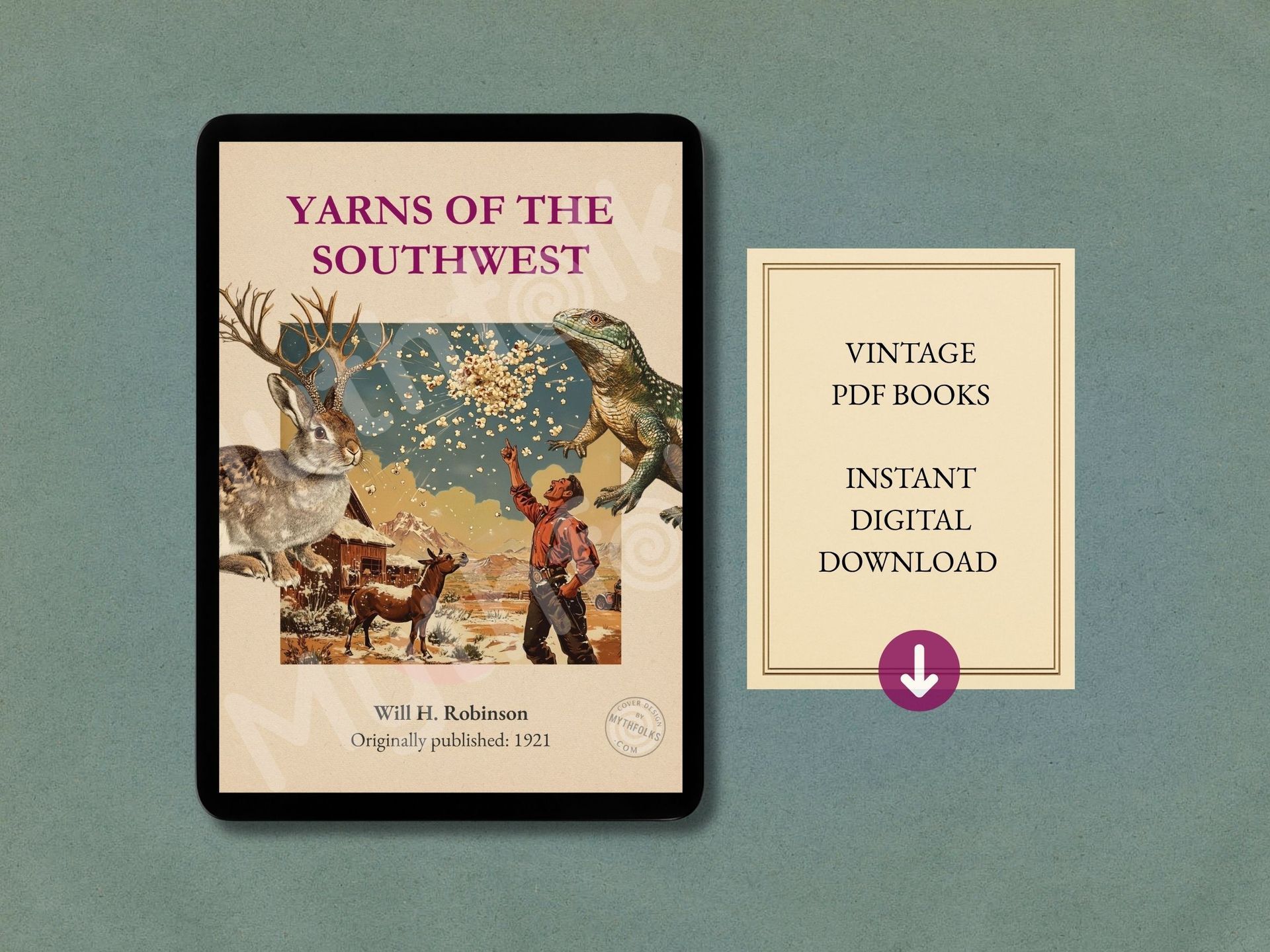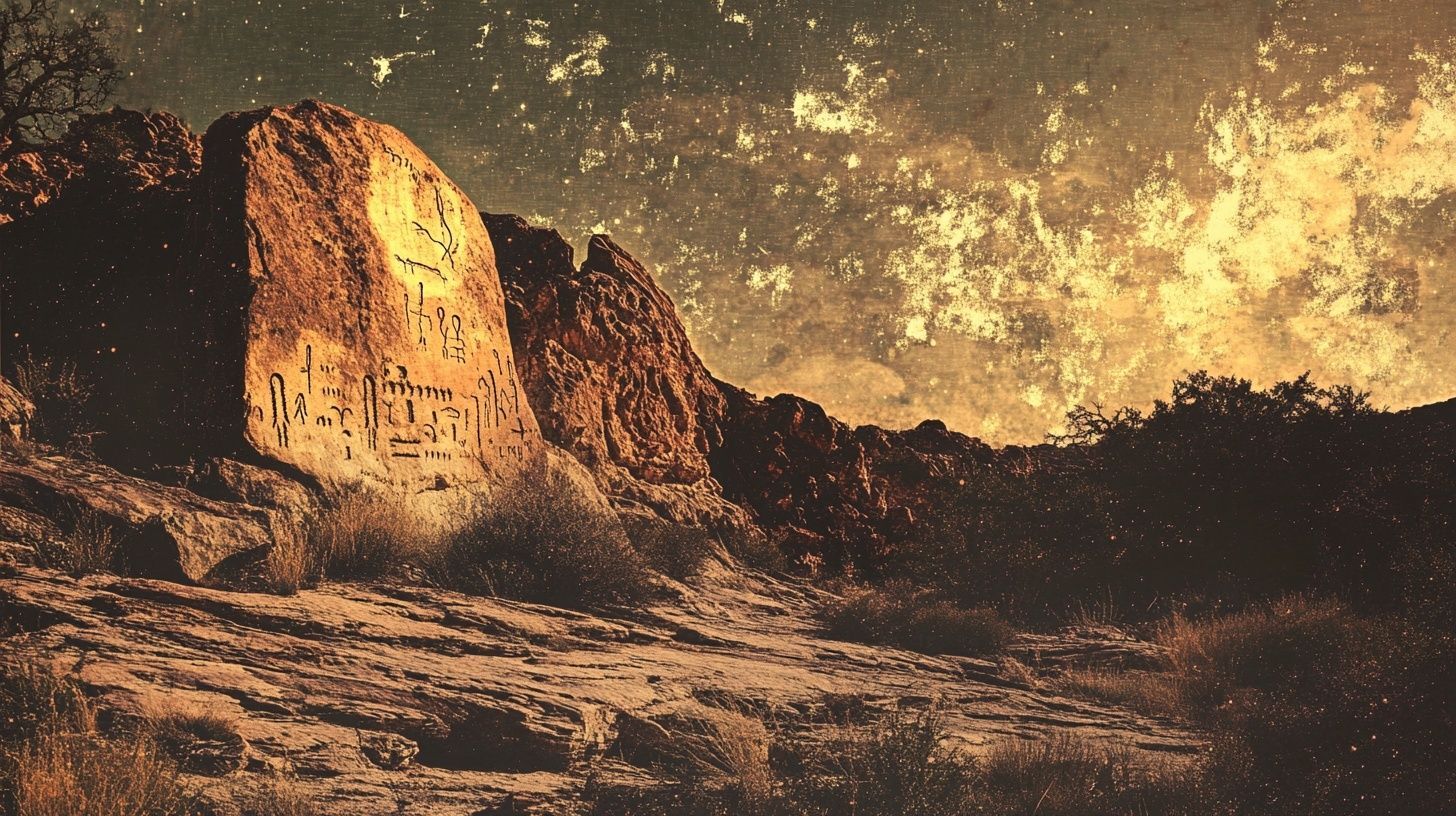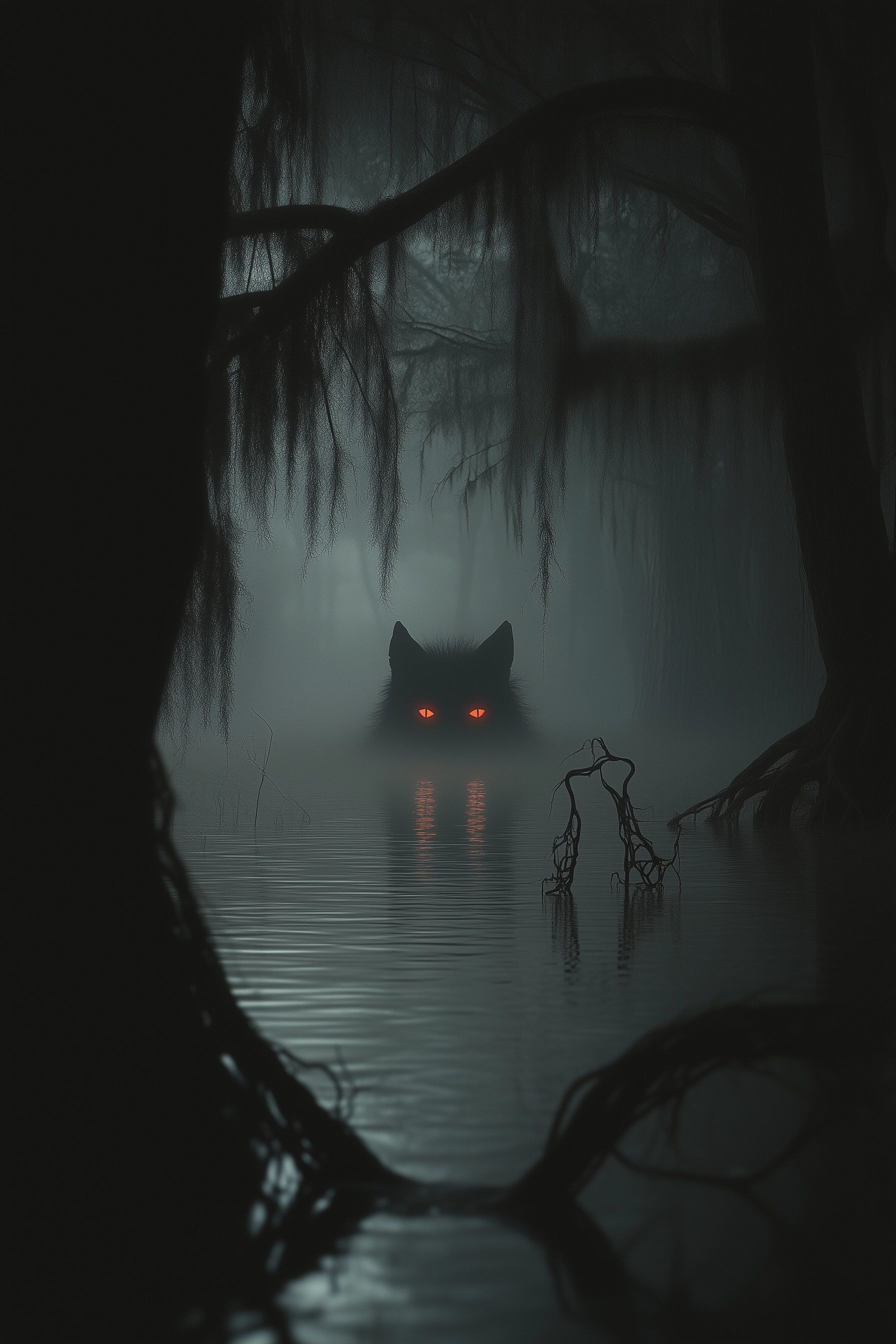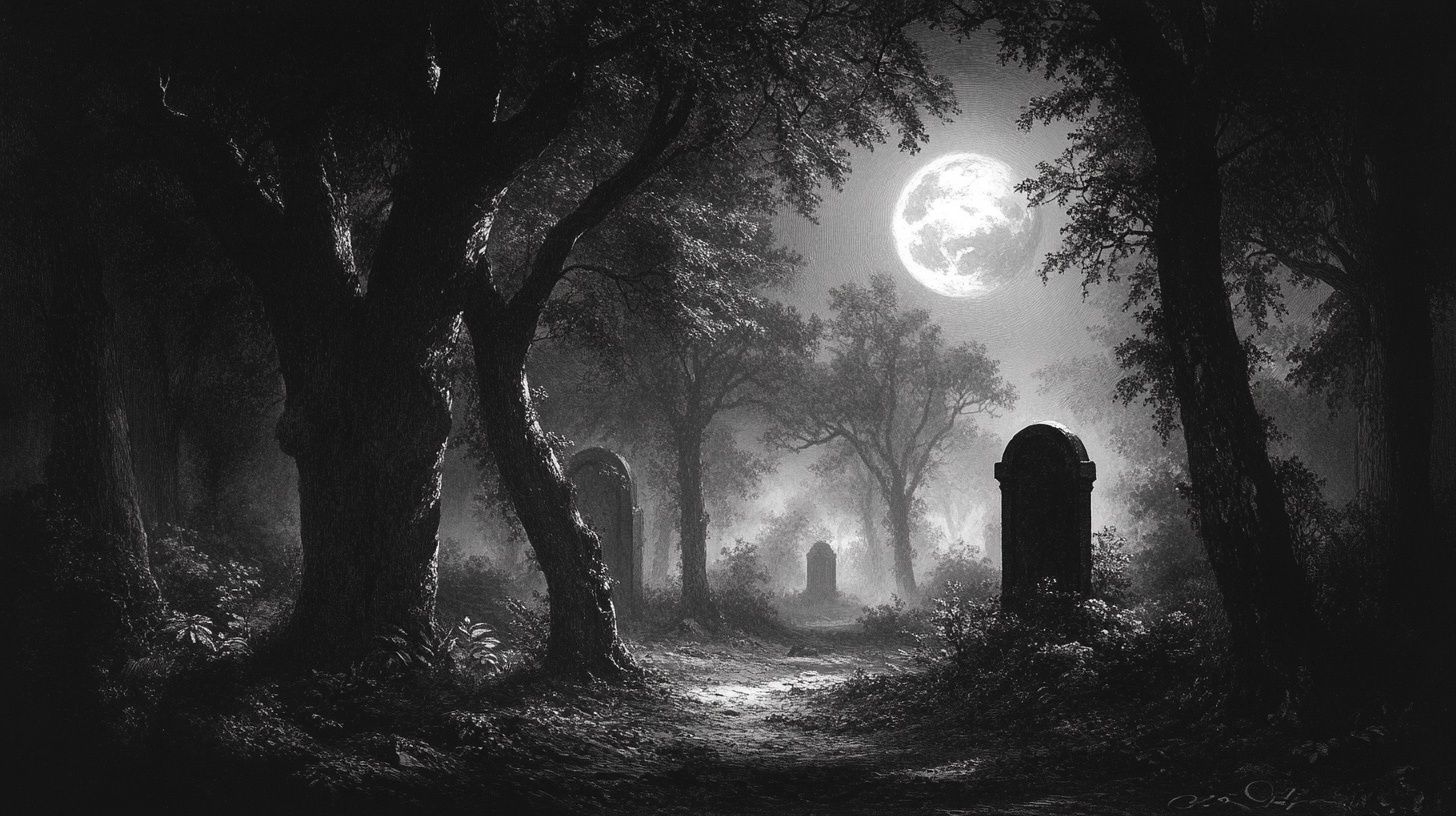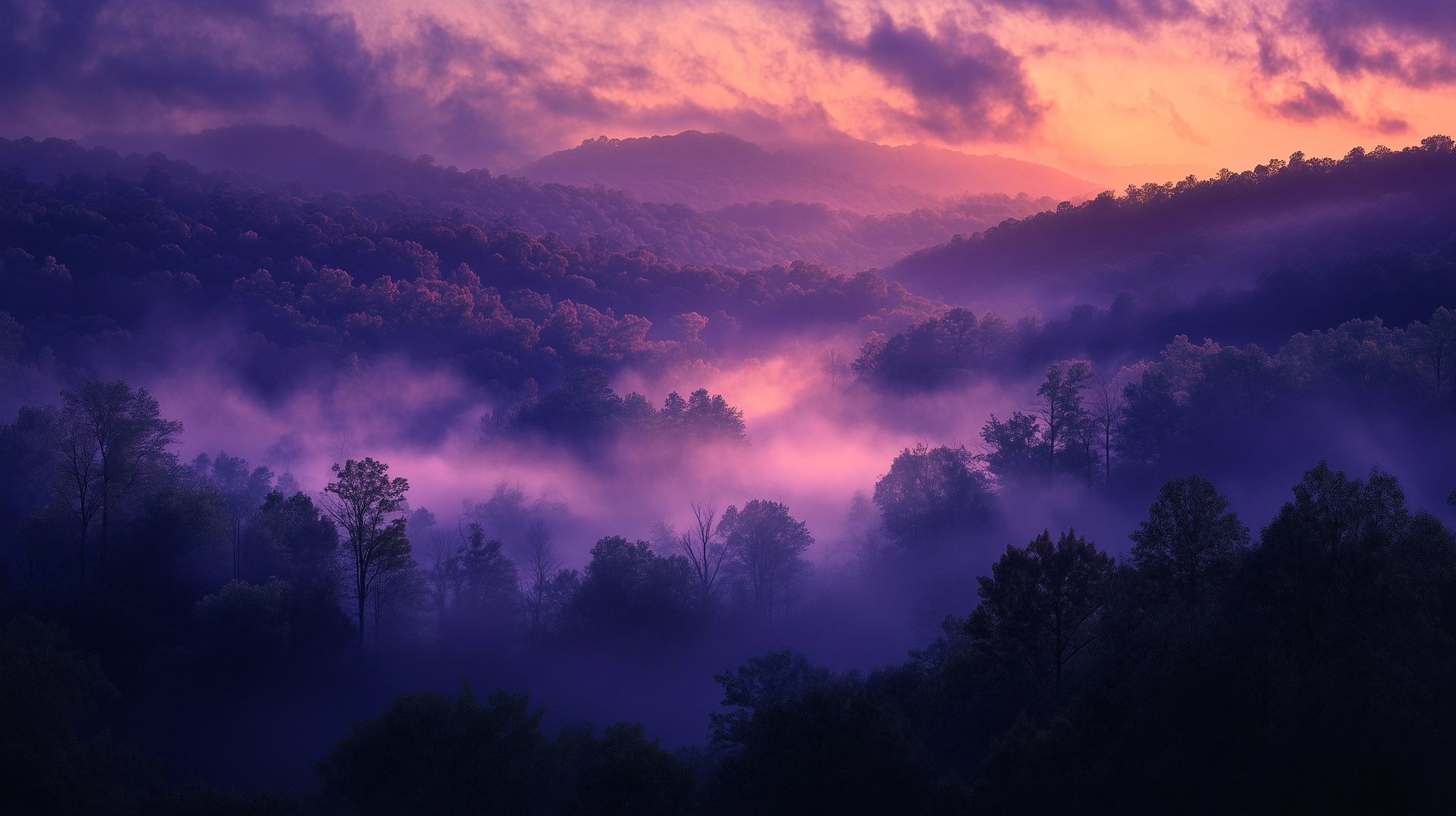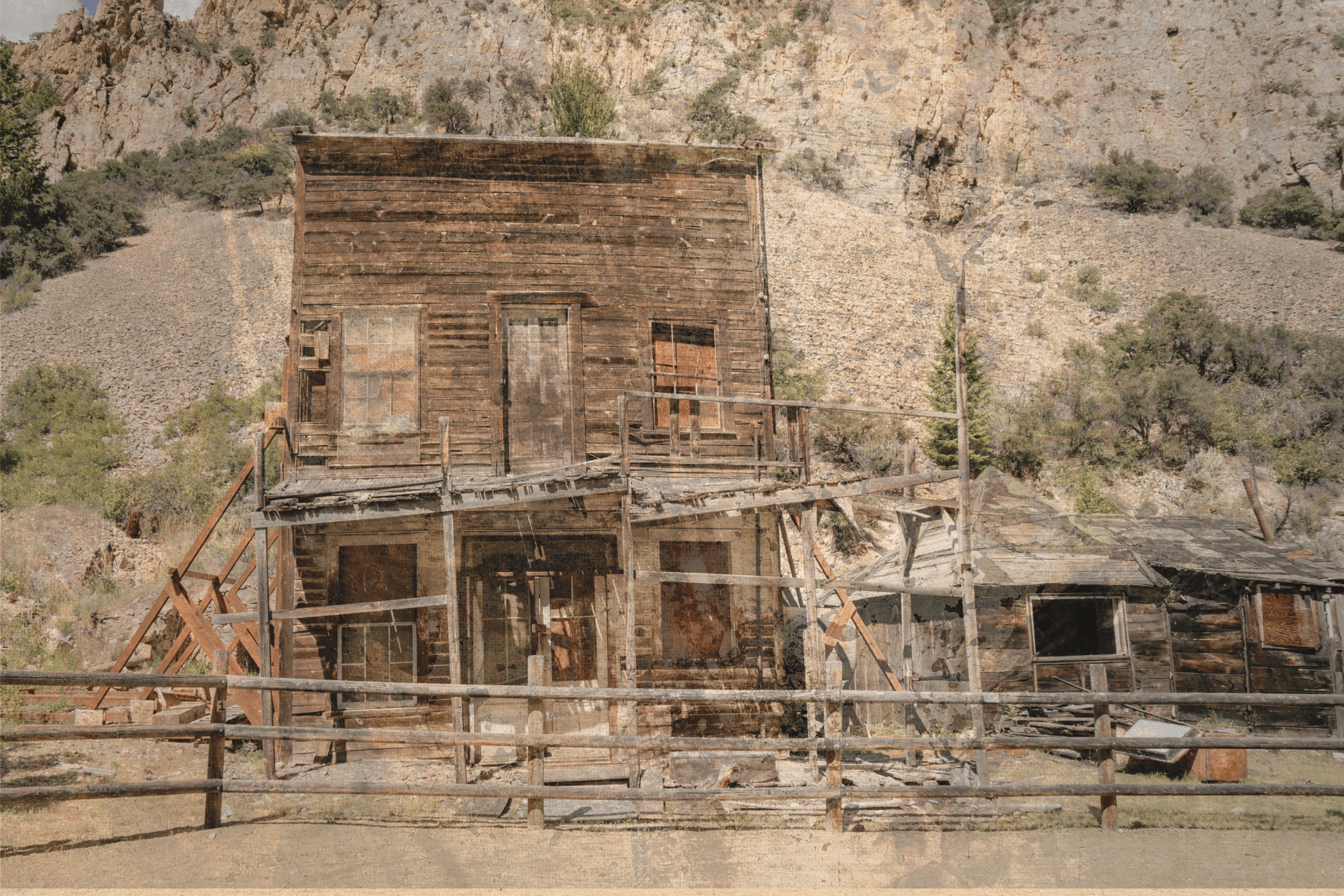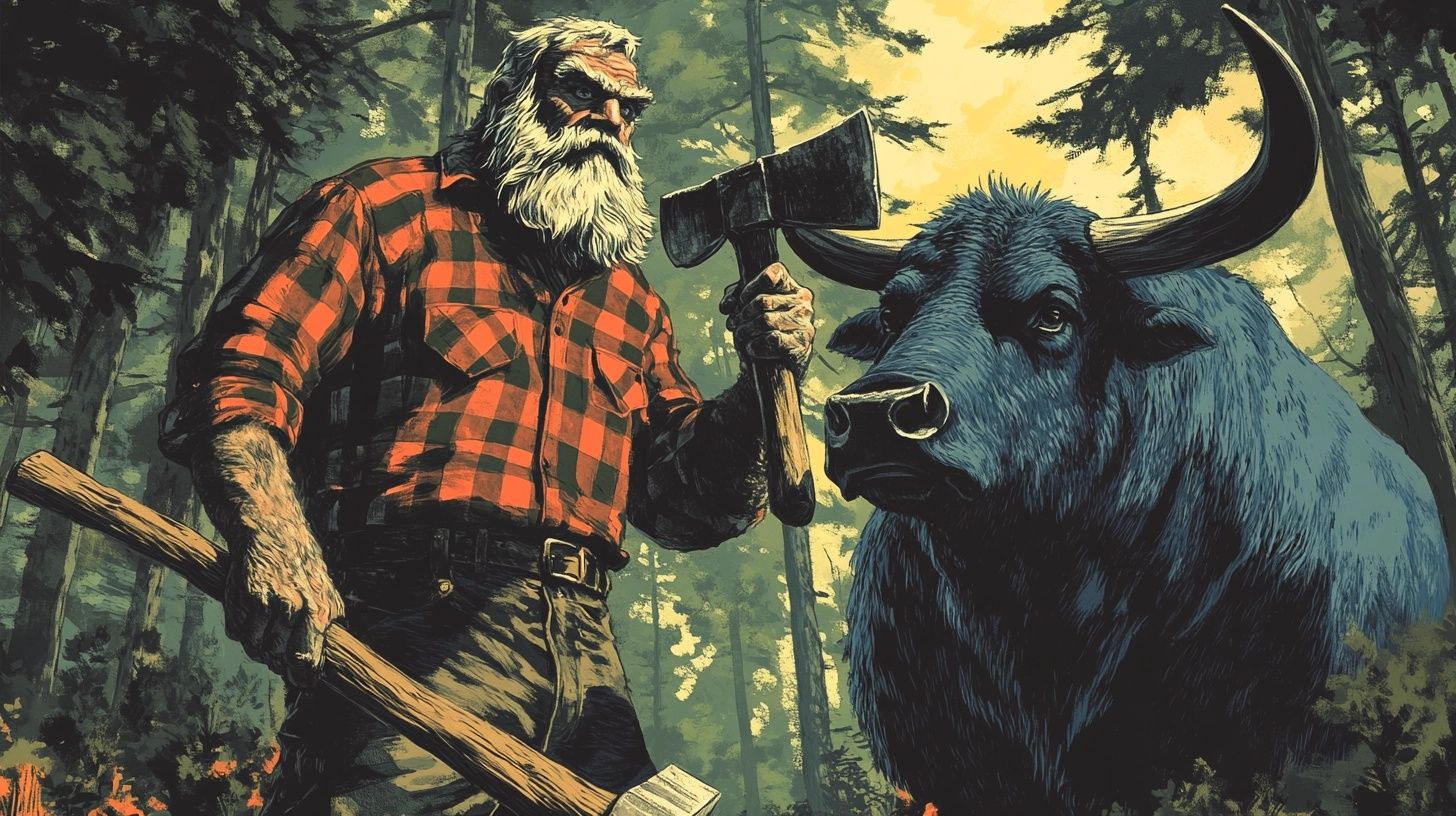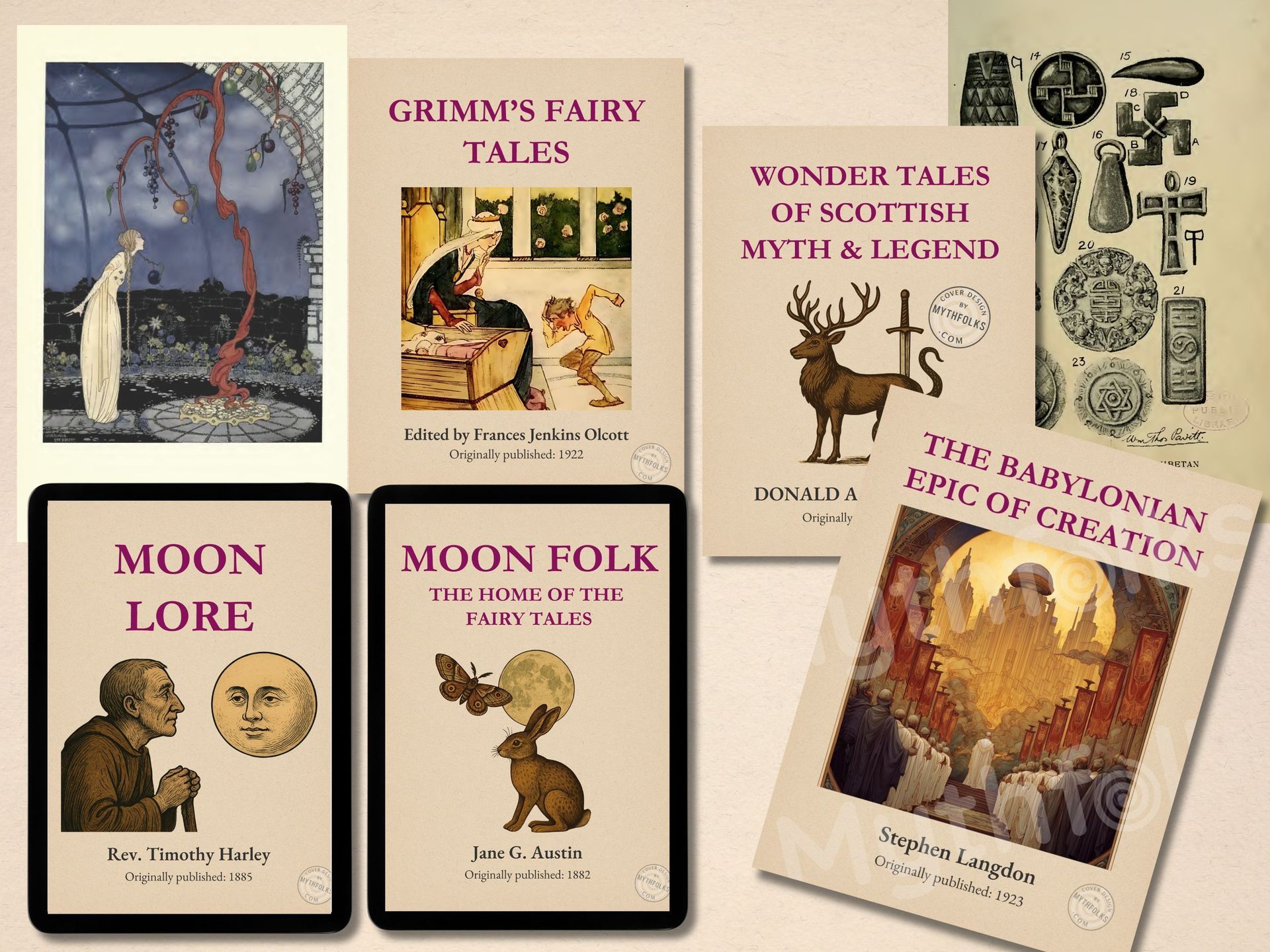Texas folklore: ghosts, outlaw folk heroes & obscure stories from the Lone Star State
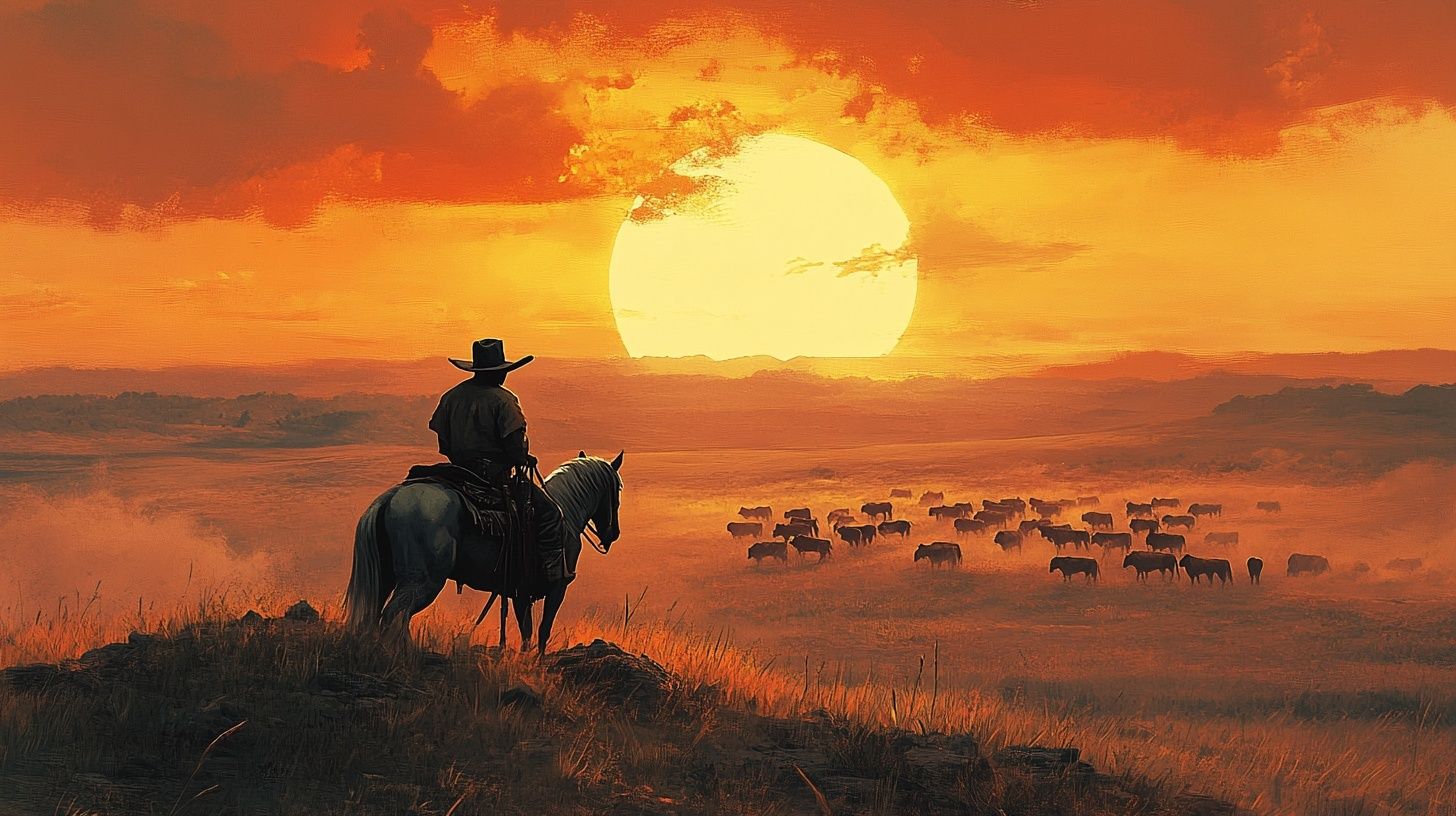
The folklore of Texas is a complex mish-mash of traditions from Hispanic, Anglo-American and various European settler communities, as well as the foundational legends of the region's Indigenous tribes.
Which makes it another US state that is rife with fascinating and obscure folklore stories!
Read on for my round-up of mythical creatures, ghost stories, tall tales, outlaws and other legends that make up the history of the Lone Star State.
Published: 19th Oct 2025
Author: Sian H.
Cryptids of Texas
Texas is surprisingly light on cryptids, especially given its size. It's partly because of that - it contains such a wide spread of folklore influence but stories don't become as specifcally localized to Texas (incidentally, Michigan and West Virginia are rife with cryptids!).
El Chupacabra:
Less obscure and a prominent legend in Latin American folklore - but the Chupacabra has a unique expression in Texas. While early reports from Puerto Rico described a bipedal, reptilian creature, the Texas version is most often reported as a hairless, canine-like animal, sometimes called the "Texas Blue Dog."
Biological analysis of apparent specimens often suggests they are coyotes or dogs with severe cases of sarcoptic mange, which accounts for the hair loss and distressed appearance.
The Big Bird of the Rio Grande Valley:
This is a modern cryptozoological phenomenon dating to a series of sightings in 1976. Witnesses in South Texas, including law enforcement, described a very large, dark, winged creature with leathery skin and a 12-to-15-foot wingspan.
Descriptions were often compared to that of a pterosaur, a flying reptile from the late Cretaceous period and there is some talk of it being a Jabiru stork which is found across the Americas. The cluster of sightings generated significant local media attention at the time.
The Lake Worth Monster:
In the summer of 1969, multiple residents of the Fort Worth area reported encounters with a bipedal, horned goat-like creature covered in white and grey fur near Lake Worth.
The entity, quickly named the Lake Worth Monster, was reportedly aggressive, with one famous account detailing how it threw a car wheel and tire at a group of observers before retreating into the woods of the Greer Island Nature Center. This one was later said to be a prank but there are conflicting reports so for now, technically it could still be open to discussion.
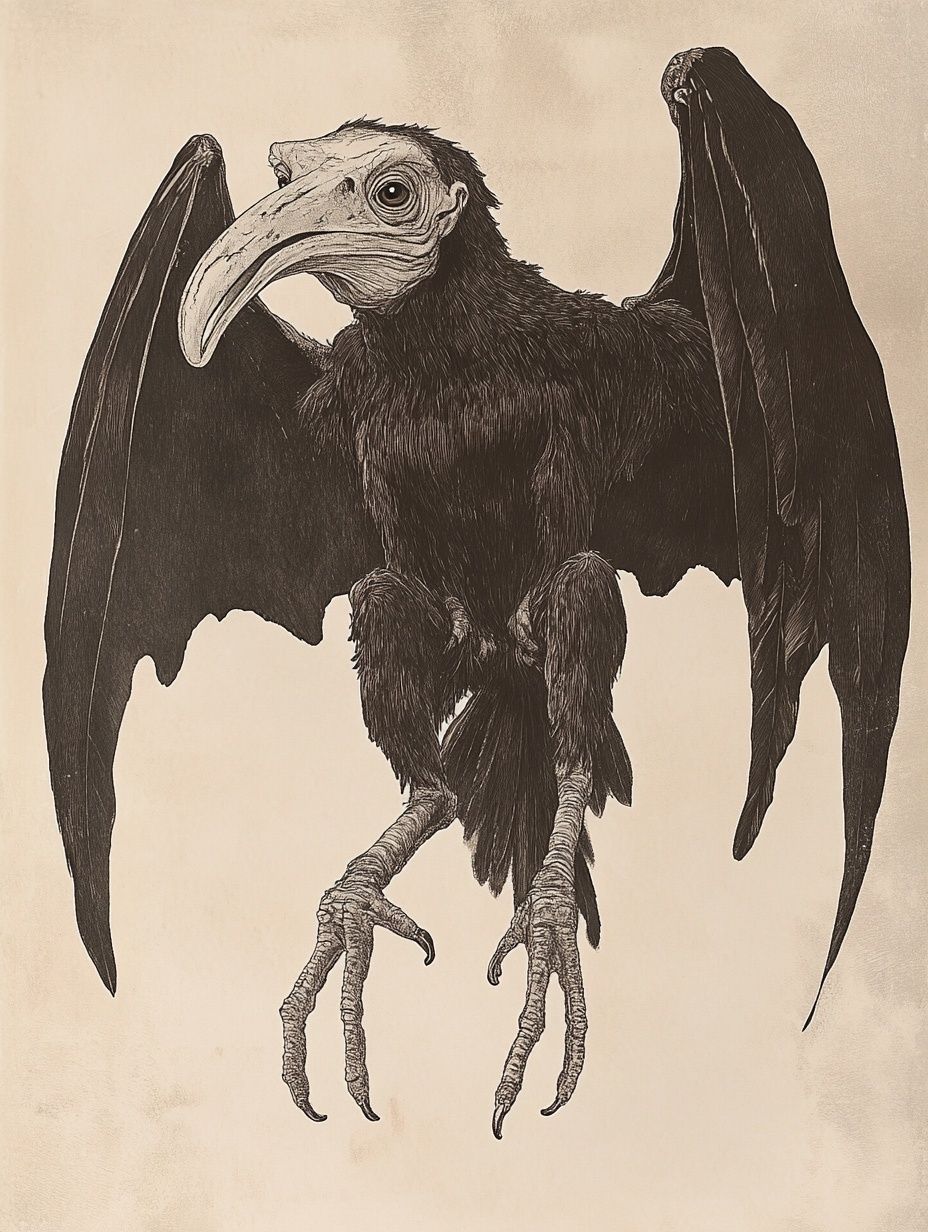
Mythical Creatures
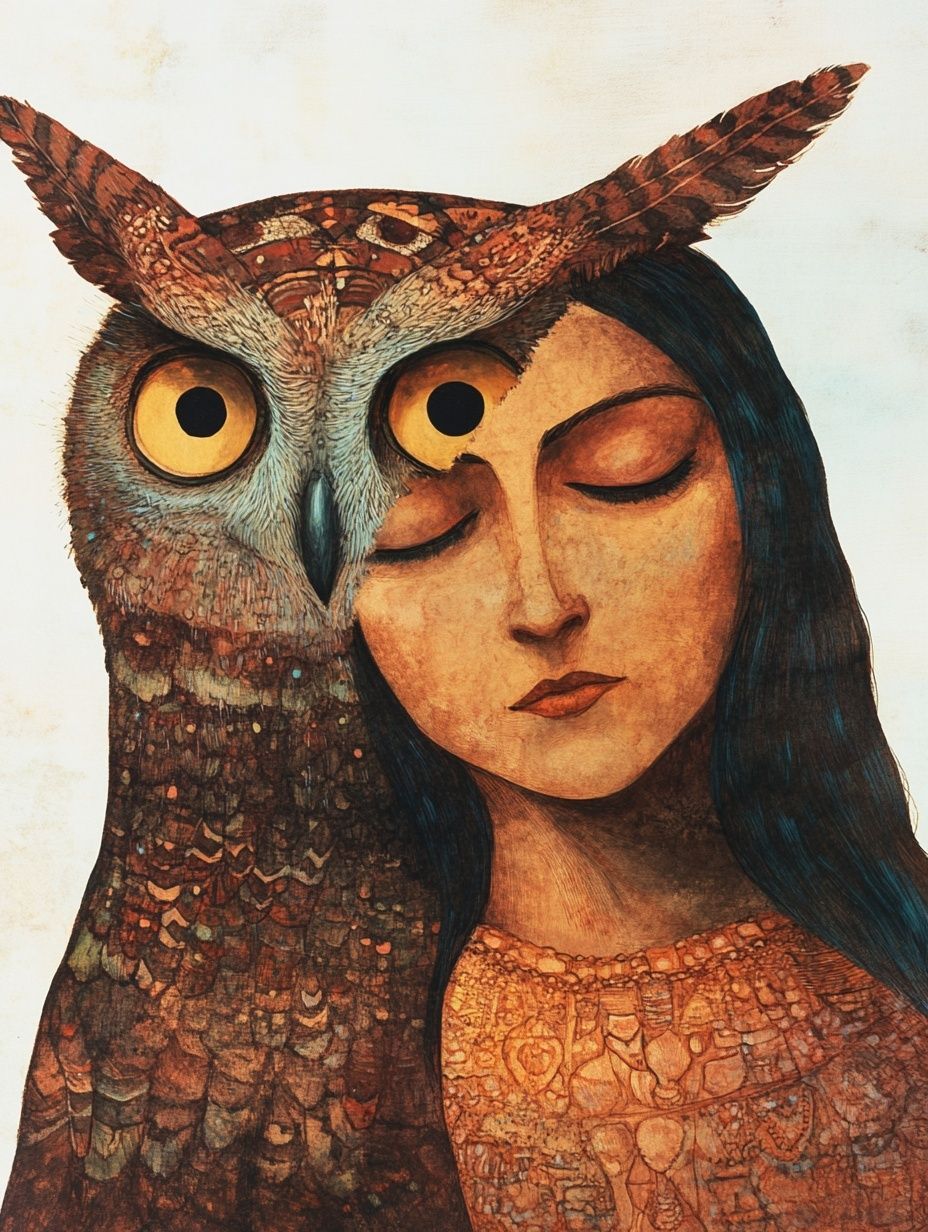
La Lechuza:
In the folklore of the Texas-Mexico borderlands, La Lechuza is a bruja - a witch - who possesses the ability to shapeshift into a large owl.
Often described as having the face of a woman, its nighttime cry is considered a harbinger of death or serious misfortune and the witch-owl is believed to target individuals who are out late at night or have committed misdeeds.
The Horned Serpent (Uktena):
A significant mythical figure from the traditions of Southeastern tribes like the Cherokee and Choctaw, the Horned Serpent's story is present in East Texas through the historical influence of these tribal nations.
Known specifically as the Uktena in some traditions, it's described as a massive, snake-like being with horns and a glowing, powerful crystal set in its forehead.
Its breath was considered fatal and it was believed that a warrior who managed to slay one and claim the crystal would gain immense spiritual power.
While not confined exclusively by modern state borders, the folklore of the Caddo Nation is foundational to East Texas. Their myths often feature powerful and dangerous beings who test the strength and resolve of heroes.
Caddo Cannibals:
In Caddo folklore, cannibals can appear as seemingly harmless figures, such as an old man and woman living in an isolated tipi, to lure in their prey.
These beings prey on those who travel alone into the woods, using deceptive challenges or impossible trials of strength to overpower them.
One legend details a cannibal man using a mask with an "iron nose" as a weapon against his victims.
As mythical figures, their defeat often requires the hero to receive aid from a powerful, benevolent spirit like the Sun, demonstrating the importance of supernatural guidance for survival.
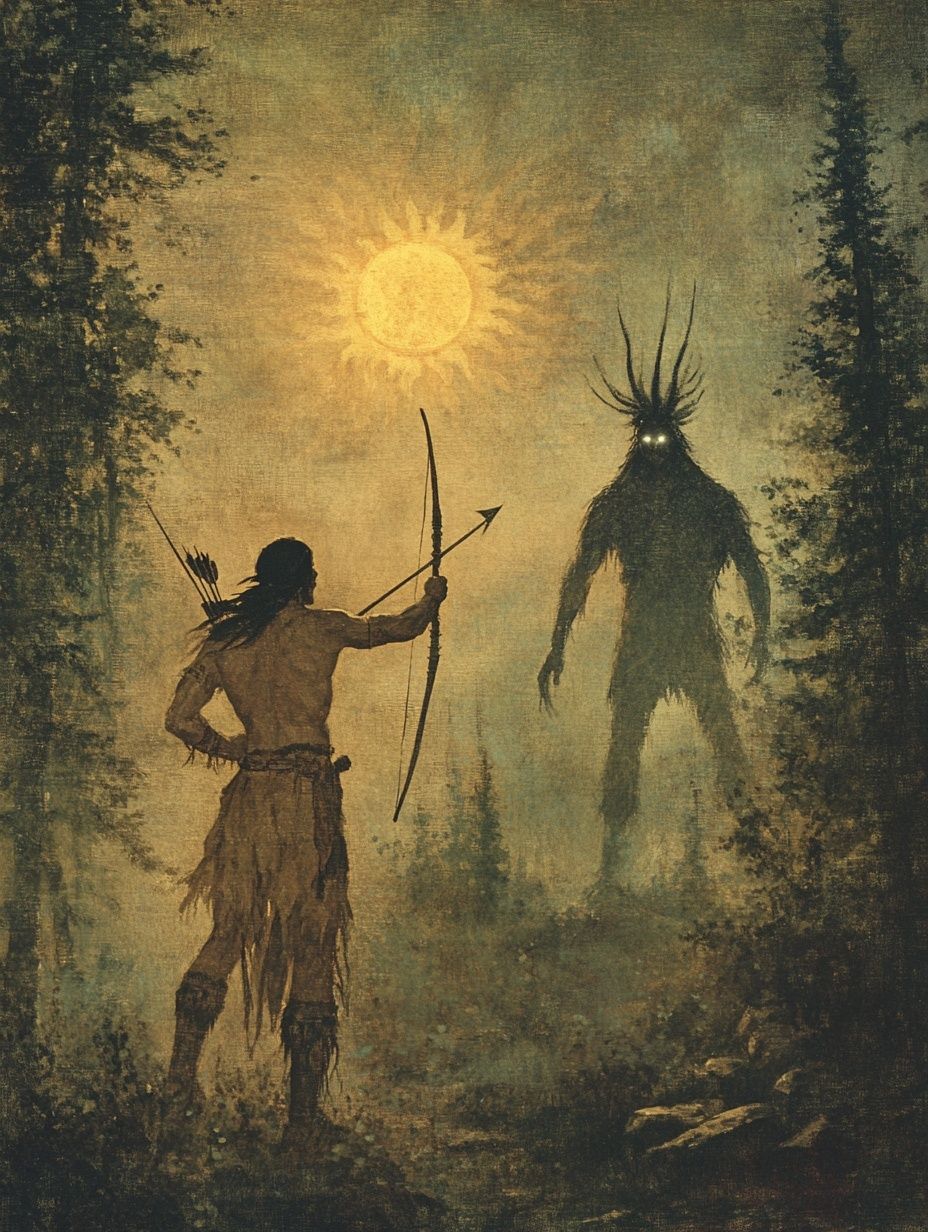
The Wild Man of the Navidad - a one-of-a-kind Texan creature legend
This one is a complex and contradictory Texas legend originating in the 1830s. The story has at least four distinct versions: in some tales from slave folklore, he was an unseen, benevolent spirit that stole food but sometimes returned borrowed tools sharpened and cleaned. In others, he was a hairy, Bigfoot-like cryptid seen moving quickly through the brush, leaving mysterious footprints.
A third version claims he was a runaway slave who was eventually captured in 1850. Finally, some stories insist the figure was actually a "Wild Woman," a settler who was lost during the Texas Revolution and grew up in the wild. Because the legend bundles together elements of a cryptid, a ghost and real historical possibilities, its true origin remains a mystery.
Ghost Stories and Haunted Places
La Llorona (The Weeping Woman):
The legend of La Llorona is a foundational element of Hispanic folklore with a significant presence in Texas. In most versions, she's the spirit of a woman who killed her children, usually by drowning, after being abandoned by their father for a woman of a higher social status.
She's now condemned to haunt waterways searching for them. Some accounts associate her with the historical figure Doña Marina (La Malinche), Hernando Cortés's translator, who supposedly drowned their son to prevent Cortés from taking him to Spain.
This legend crosses many cultural boundaries, with variations appearing in German, Greek and Jewish folklore. Parallels include the Greek myths of Lamia, a monster who stole and devoured children after Hera killed her own and Medea, who murdered her two children to punish her husband Jason for his betrayal.
Another parallel is found in Jewish folklore's Lilith, Adam's first wife, who refused subjugation and was later depicted as a threat to newborn infants.
El Muerto (the headless horseman)
Drawing some parallels with early European headless horseman beings like the Dullahan, the ghost legend of El Muerto is distinct because it was based on a real person.
The story began in the 1850s when Texas Rangers, including Creed Taylor and "Bigfoot" Wallace (more on him further down), killed a horse thief named Vidal.
As a warning to other thieves, they cut off his head, tied his corpse upright onto a wild horse with his head tied to the saddle horn and set the animal loose. Hmm. Sightings of this body riding through South Texas evolved into a supernatural legend, with later tales describing the horse breathing fire and the rider's eyes glowing.
Years later, Vidal's mummified remains were found and buried, but the ghostly sightings of El Muerto continued.
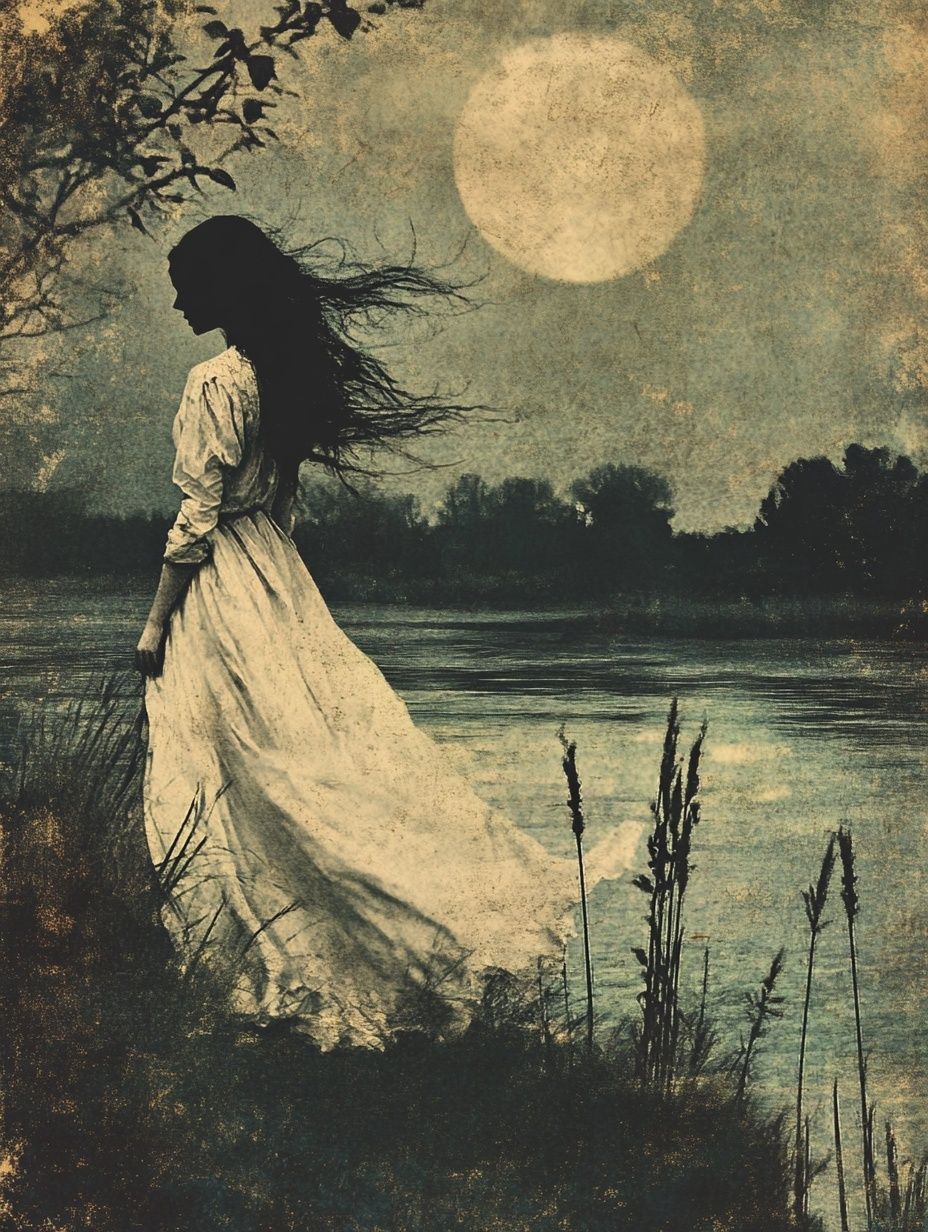
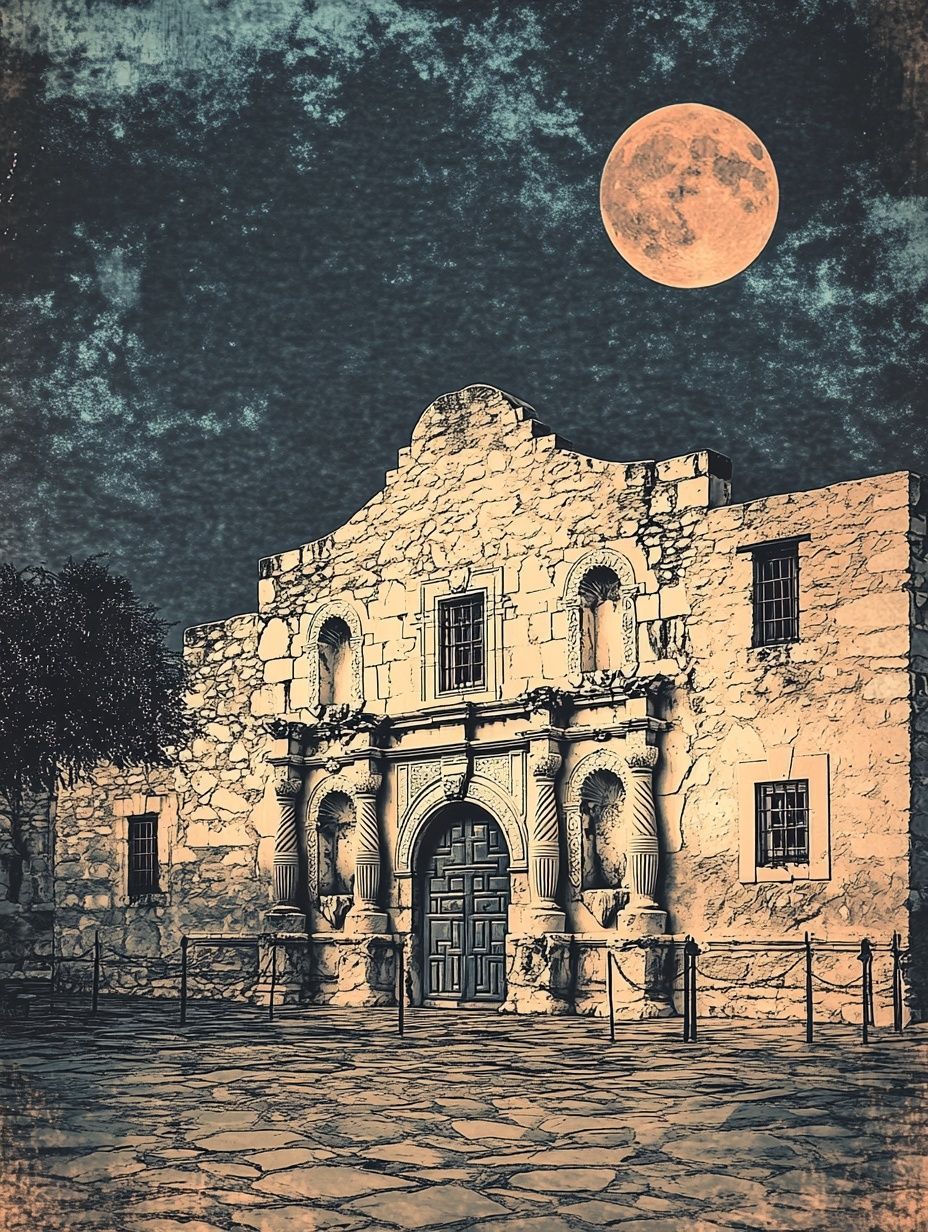
The Ghosts of the Alamo:
The Alamo, the historic mission in San Antonio, Texas, is famous for the 1836 battle where a small force of Texan defenders was killed by a much larger Mexican army.
A few days later, their general, Santa Anna, ordered his soldiers to go back and tear down the mission's chapel.
But when the soldiers went to destroy the building, they saw the glowing ghosts of the armed defenders rising up on the walls.
Believing the spirits were still guarding the Alamo, the terrified soldiers refused the order and retreated, leaving the chapel intact.
The Presidio La Bahía:
Located in Goliad, this historic fort was the site of the Goliad Massacre in 1836, where nearly 350 Texan soldiers were executed.
It's considered one of the state's most active paranormal sites. Reported phenomena include the sounds of battle and apparitions of soldiers in the chapel.
A frequently reported spirit is that of a "woman in black," believed to be the ghost of Francita Alavez, a historical figure known as the "Angel of Goliad" for her efforts to save some of the prisoners.
Enjoying this article?
Check out this rare, vintage ebook featuring
original & authentic
tall tales & yarns of the old Southwest USA!
(Clicking the link will open the Mythfolks Etsy shop in a new tab.)
The Jefferson Hotel:
This historic hotel in Jefferson, East Texas, has a national reputation for being haunted. Built in the 1850s, the hotel has accumulated a large cast of resident spirits. Staff and guests report a wide range of paranormal activity attributed to specific spirits, including a jilted bride from the 19th century, phantom children playing pranks and a Civil War soldier.
The USS Lexington:
A decommissioned WWII-era aircraft carrier docked in Corpus Christi, the USS Lexington is nicknamed "The Blue Ghost." The ship is a well-known site for paranormal claims, with many stories centering on the spirits of sailors who died during its service.
A commonly reported ghost is an engine room operator who is said to be a friendly guide, but other reports include voices, doors slamming on their own and phantom figures.
The White Lady of the Rio Frio:
This ghost story from the Texas Hill Country is about Maria Juarez, a young woman in the 19th century who was murdered by a jealous family member after she fell in love with a man her family forbade her from seeing. Her spirit, dressed in white, is said to haunt the area along the Rio Frio where she used to meet her lover.
The ghost of Chipita Rodríguez:
This legend comes from the true, tragic story of the only woman legally hanged in Texas. In 1863, Chipita Rodríguez was executed for murdering a trader with an axe at her tavern, though she maintained her innocence to the end (a man reportedly confessed years later). Her ghost is now said to haunt the Nueces River.
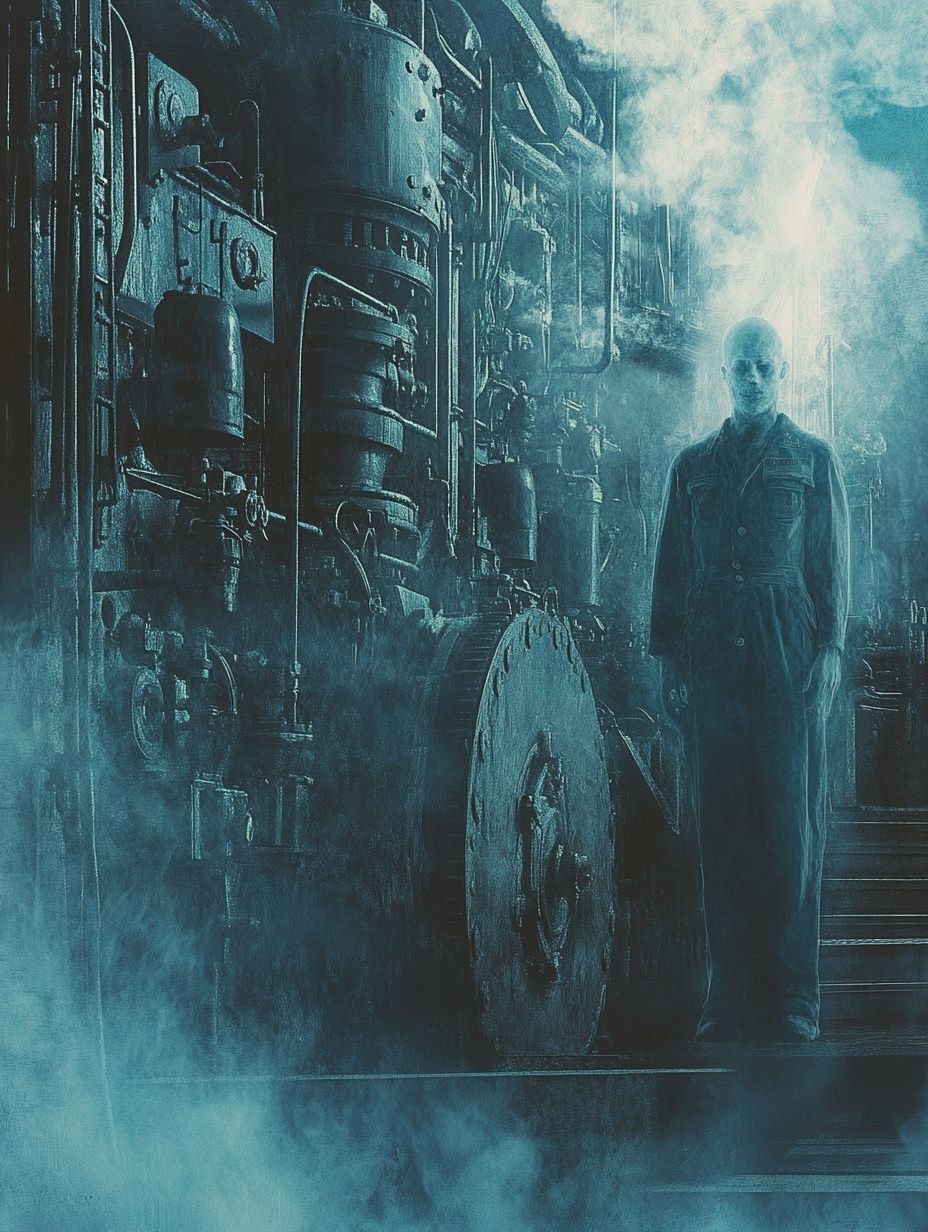
The Lady in Blue or the Blue Nun:
This ghostly legend is tied to the Spanish exploration of the Camino Real. It centers on Mother María de Jesús of Agreda, Spain, who, in 1631, claimed to have miraculously visited the Tejas Indians via bilocation - being in two places at once without leaving her convent.
Decades later, when Father Damian Massanet accompanied Alonso de Leon's expedition in 1689, he encountered Tejas Indians who claimed a "Lady in Blue" had visited them years before and instructed them in Catholicism.
Convinced it was the miracle of Mother María, Father Massanet was inspired to establish Mission San Francisco de los Tejas in 1690, the first permanent European settlement on the Camino Real in Texas.
Indigenous American Legends
The Caddo Indians, who traveled the Camino Real over a thousand years ago, have a tale that they came to East Texas out of a land of darkness. They met travelers with the greeting of "Tejas" - meaning "friend" - which gave Texas its name.
The legend of the bluebonnet:
This Comanche story is the foundational myth for the Texas state flower. It tells of a great drought when a young orphan girl sacrificed her most prized possession - a warrior doll - by casting it into a fire to appease the spirits. The next morning, the fields where the ashes fell were covered in a blanket of bluebonnets, a sign the famine was over.
The spirits of Enchanted Rock:
This large pink granite dome in the Hill Country is a sacred site for several peoples, including the Tonkawa and Comanche. Legends attribute the rock's creation and spiritual power to various events. Some stories claim it's inhabited by the spirits of warriors, while others speak of a Tonkawa chief's spirit haunting the rock after he sacrificed his daughter there. Reports of "ghost fires" or unexplained lights on the summit are a common element of the rock's folklore.
The creation of Caddo Lake:
Caddo tradition explains the formation of this unique lake and cypress swamp in East Texas as a direct act of the Great Spirit. According to the legend, the Great Spirit caused a massive earthquake and flood to punish a local Caddo leader for his arrogance. The resulting maze of bayous, sloughs and cypress trees became the lake.
The legend of the white deer:
This is a Caddo legend about a young woman who fell in love with a Spanish conquistador. After the warrior was killed in battle, she died from a broken heart. The story concludes that her spirit returned to the forest where they had met in the form of a pure white deer, which is sometimes still seen in the East Texas woods.
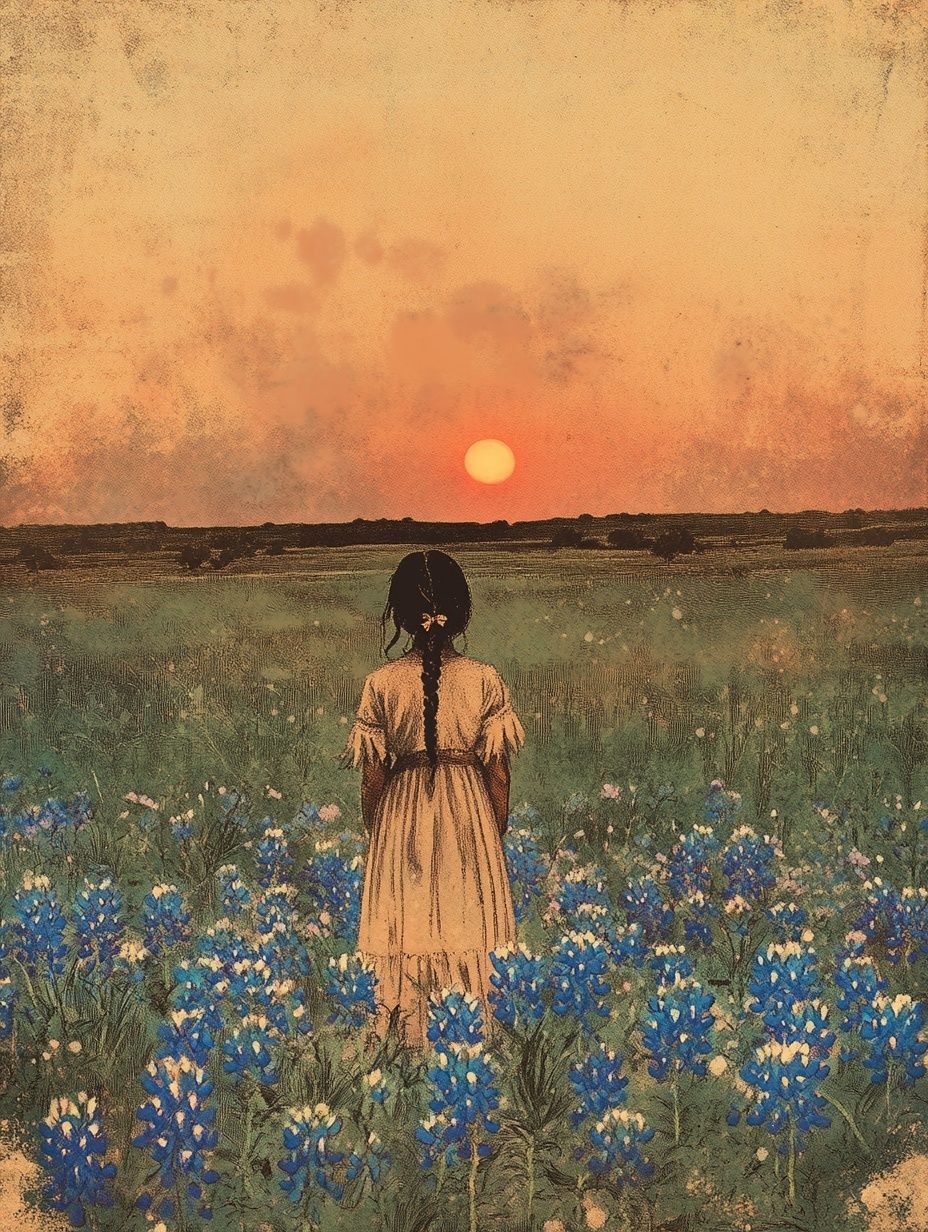
Texan outlaw folk heroes
The main difference between a regular outlaw and an outlaw folk hero is public perception, which is shaped by the outlaw's motivation. An outlaw is simply a criminal, but an outlaw folk hero is a criminal who is admired by a community because their crimes are seen as a justified fight against a greater injustice.
Every outlaw folk hero is an outlaw, but not every outlaw becomes a folk hero. The title of "folk hero" is an honor given by the people, not a label assigned by the law. Here are a couple of Texan examples.
Sam Bass, the "Robin Hood of Texas":
Known as "Texas's Beloved Bandit," Sam Bass (1851–1878) was a notorious outlaw whose career began after he and a partner lost the profits from a cattle drive in a series of bad investments.
To recover their funds, they turned to crime, culminating in a highly successful 1877 Union Pacific train robbery in Nebraska where they stole $60,000 in gold.
Bass escaped the ensuing manhunt and returned to Texas, where he formed a new gang and continued to rob trains, earning a folk-hero reputation as a sort of Robin Hood figure.
Ultimately, he was betrayed by a gang member, James W. Murphy, who told Texas Rangers of a planned bank robbery in Round Rock. The gang was ambushed on July 19, 1878, and Bass was mortally wounded. He was captured the next day and died on his 27th birthday.
Gregorio Cortez, a Mexi-American folk hero
In 1901, a misunderstanding with a Texas sheriff over a stolen horse led to the sheriff shooting Cortez's brother; Cortez retaliated by killing the sheriff.
This act made him an outlaw and sparked a massive ten-day manhunt, during which Cortez famously evaded a posse of up to 300 men, traveling over 500 miles on foot and horseback.
While Anglo-Texans viewed him as a dangerous criminal, the Mexican American community saw him as a hero fighting a corrupt and prejudiced system. After his eventual capture and a series of highly publicized trials, he was imprisoned but later pardoned due to immense popular support.
His story was immortalized in the famous border ballad, "El Corrido de Gregorio Cortez," which cemented his legacy as a symbol of resistance against injustice.
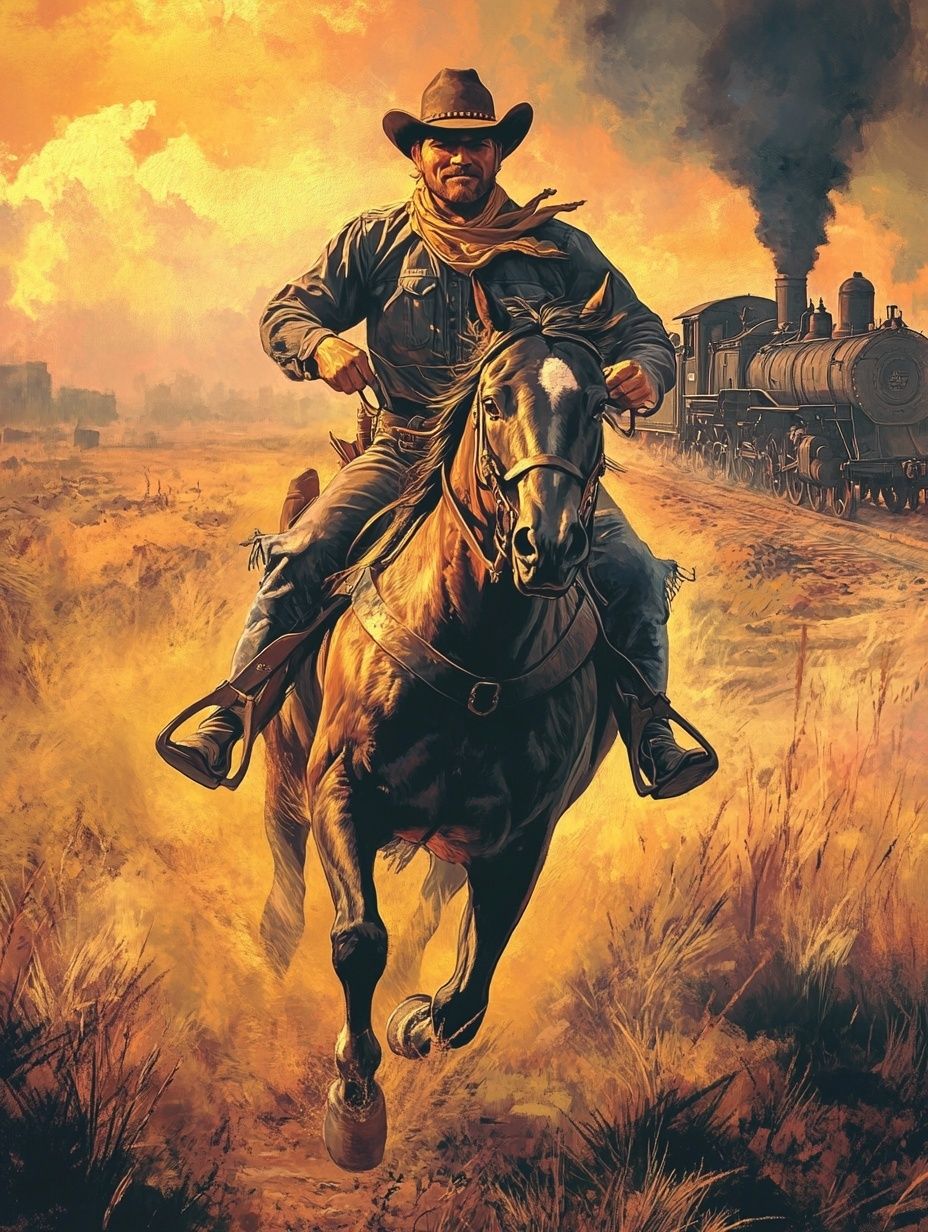
Other legendary Texan figures
William "Bigfoot" Wallace:
A real-life Texas Ranger, William "Bigfoot" Wallace (1817-1899) is a prime example of a historical figure whose real life was so extreme the stories are sometimes mistaken for tall tales.
He came to Texas seeking revenge after his brother and cousin were killed in the Goliad Massacre, but his legend was truly forged when he was captured during the disastrous Mier Expedition.
There, he survived the infamous "Black Bean Episode" - a deadly lottery where Texan prisoners were forced to draw beans from a pot. A white bean meant life; a black bean meant immediate execution. Wallace drew a white bean.
This single, dramatic event, combined with tales of his immense size, brutal wilderness fights and his own knack for spinning a yarn, transformed the man into a frontier legend.
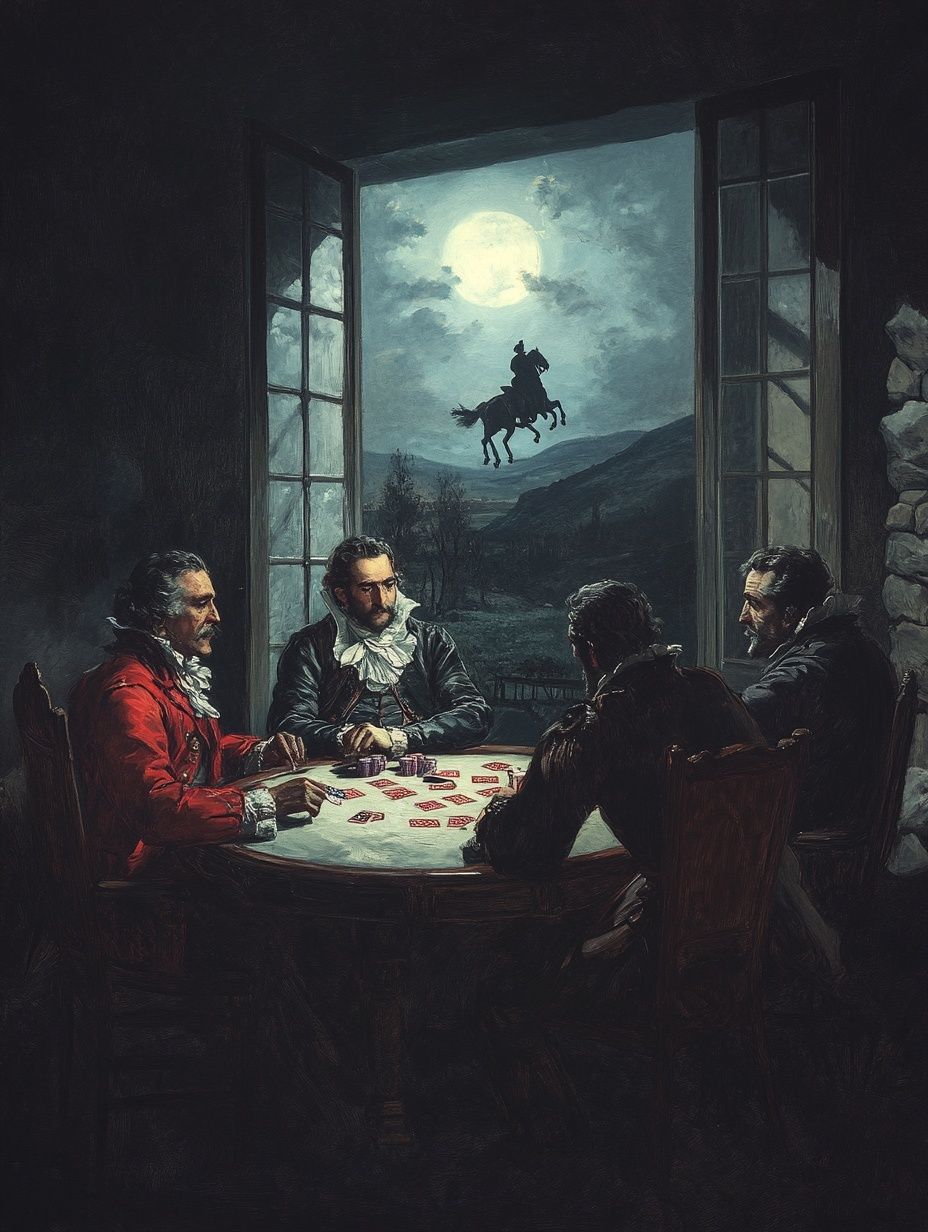
The vengeance of the Marques de Aguayo:
Special mention of this Spanish import in Texas back in the 18th century.
A legend is told of the Marques de San Miguel de Aguayo, a major figure in the history of the Camino Real.
The story claims he once excused himself from a card game, rode fifty miles to his hacienda, killed his unfaithful wife and her lover and rode ten horses to death in the process - all before returning to the game with his friends none the wiser.
Bonnie & Clyde
A second special mention as probably the most famous Texan outlaws, at least in modern consciousness.
As their home state, Texas was the backdrop for many of Bonnie and Clyde's crimes -they were involved in numerous robberies and murders in various Texan towns, including Dallas, Hillsboro and Grapevine.
Texan tall tales & wild yarns
Pecos Bill:
Though he began as a literary creation in the early 20th century, Pecos Bill was so perfectly formed that he was adopted wholesale into Texas folklore as the ultimate cowboy.
He was said to have been raised by coyotes, to use a live rattlesnake for a whip, and, in his most famous exploit, to have lassoed and ridden a cyclone - and certainly a contender for taking on the exaggerated stories of Paul Bunyan.
The tale of the two-toed wether:
This made-up piece of ranching folklore is about a castrated male sheep that, after losing two toes in a trap, became preternaturally intelligent.
The wether was said to be able to outsmart any wolf, coyote or rancher, becoming a legendary source of frustration and grudging admiration in cowboy stories
.
Mose Johnson's petrified man:
An excellent example of a 19th-century hoax becoming folklore. In the 1880s, a man named Mose Johnson claimed to have found a perfectly petrified ancient man near Mount Vernon.
The "fossil" became a popular traveling exhibit before it was eventually exposed as an elaborate fraud.
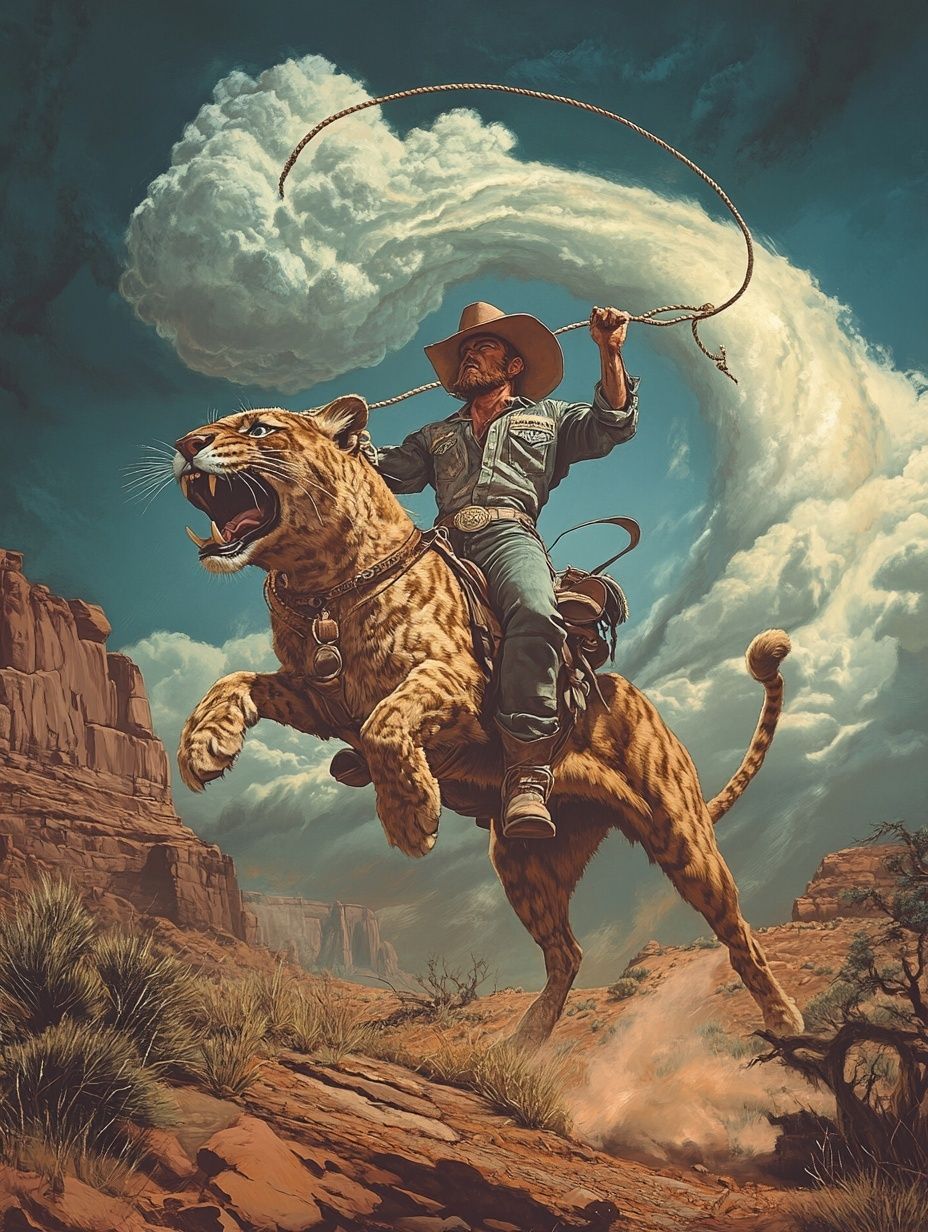
Other notable Texan legends
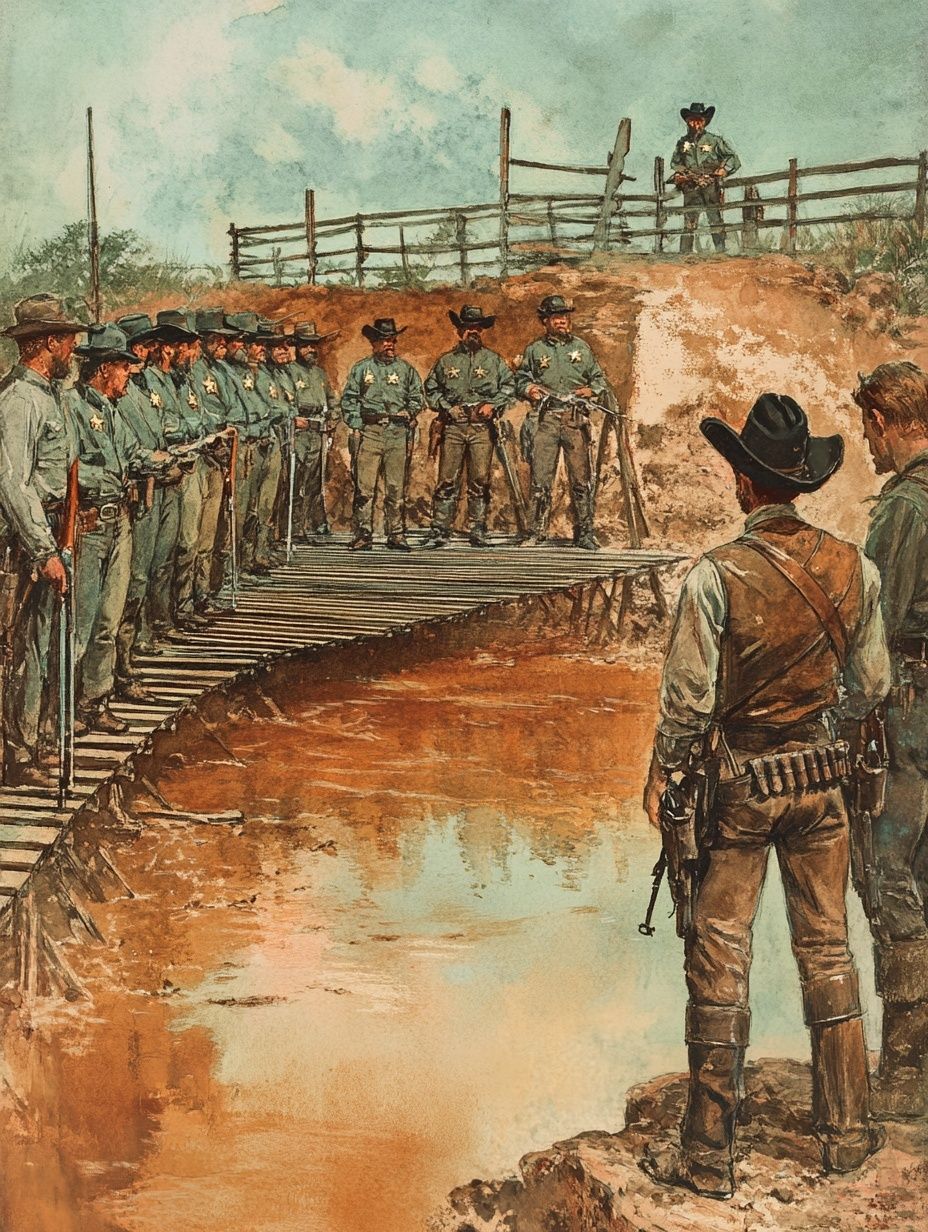
The Red River bridge war:
In 1931, a bizarre standoff erupted between Texas and Oklahoma over a new, free bridge intended to replace an old toll bridge.
When a court order blocked the free bridge, Oklahoma's governor, "Alfalfa Bill" Murray, declared martial law and sent the National Guard to open it.
In response, Texas Governor Ross Sterling sent the Texas Rangers to barricade it. The tense, armed confrontation ended peacefully, the only casual a guard who fell on his own bayonet.
But it became a legendary piece of regional history - so peculiar it was even used in Nazi propaganda as "proof" of a continuous civil war in America.
The "Pure Spanish" of East Texas:
A long-standing myth in East Texas, associated with founding families like that of Nacogdoches founder Antonio Gil Y'Barbo, held that they were of 'pure Spanish' blood - a claim to a prestigious and exclusively European heritage.
But the historical truth is that the original settlers were a highly diverse group. Records show they were a mix of people with European, Indigenous American and African ancestry and their social backgrounds were just as varied - including men taken directly from a jail.
Elitism at its finest.
The folklore of the Lone Star State - although I've categorised in a similar way to other states - is a beast all of its own.
As the largest state of the contiguous US, it has one of the broadest series of cultures that have blended over time, with very strong influences from Latin American lore as well as from Europe, as immigrants and settlers slowly made their way west.
Perhaps my most surprising discovery was how, unlike Arizona, where the desert landscape plays a strong role in folklore, in Texas it features very little. This mostly seems to be simply down to its more diverse geographical landscape with the more defining legends being products of its forests, swamps and borderlands and not its arid west.
Don't forget to check out
more US folklore below!
Article sources
- Untiedt, Kenneth L., ed. Folklore in Motion: Texas Travel Lore. Publications of the Texas Folklore Society LXIV. Denton, TX: University of North Texas Press, 2007.
- De la Garza, Phyllis. Ghosts of the Mogollon Rim. San Antonio: Western Lore Press, 1997.
- Weatherly, David. Monsters of the American Southwest. Greenville: Leprechaun Press, 2016.
- Underhill, Ruth. The Navajos. Norman: University of Oklahoma Press, 1956.
- Robinson, Will H. Yarns of the Southwest. Originally published 1921.
- Cox, William T. Fearsome Creatures of the Lumberwoods: With a Few Desert and Mountain Beasts. Illustrated by Coert DuBois. Washington, D.C.: Press of Judd & Detweiler, Inc., 1910.
- Erdoes, Richard, and Alfonso Ortiz, eds. American Indian Myths and Legends. New York: Pantheon Books, 1984.
Shop this rare vintage ebook with tales from frontier life in the Southwest
I spend a lot of time digging through old and out-of-print folklore texts and curate selected titles as digital editions.
I consulted this book in my research for this article and it features some fascinating tall tales and details of frontier life in the Southwest US, as told in the early 20th century - if you love learning about the past, you'll love this PDF ebook!
I've given it a new cover, tidied and compressed the original scans and repackaged it into a convenient digital download at a great price. Check it out here.
(Clicking the link will open the Mythfolks Etsy shop in a new tab.)
Explore more North American folklore



